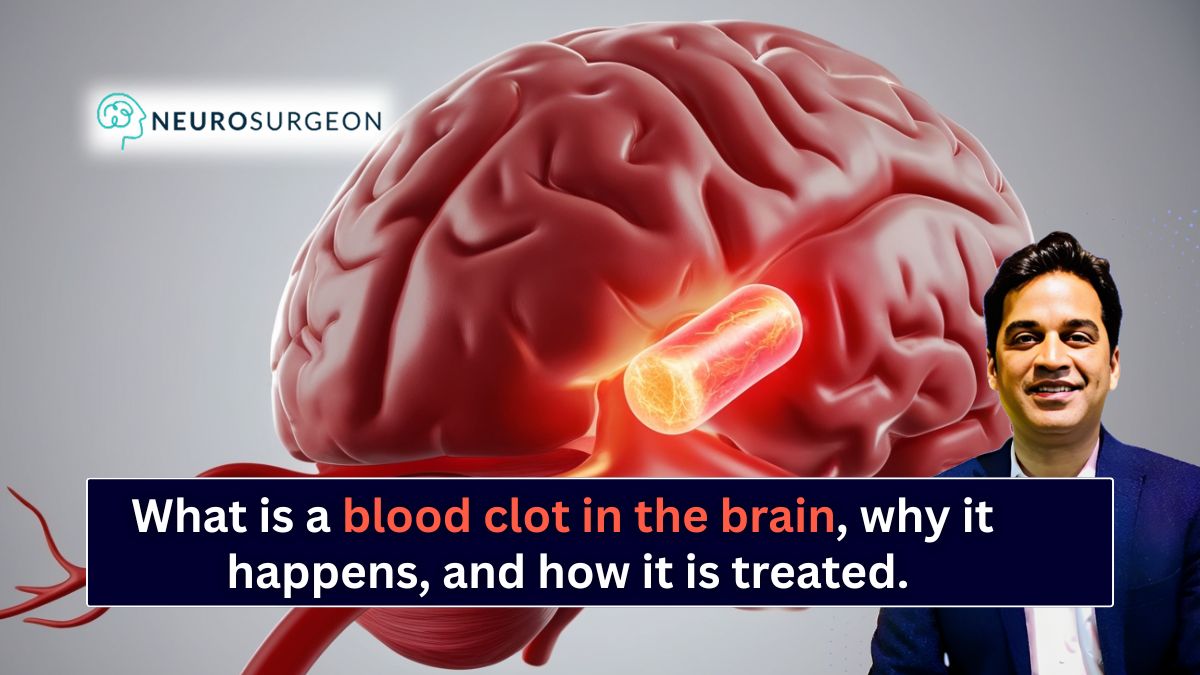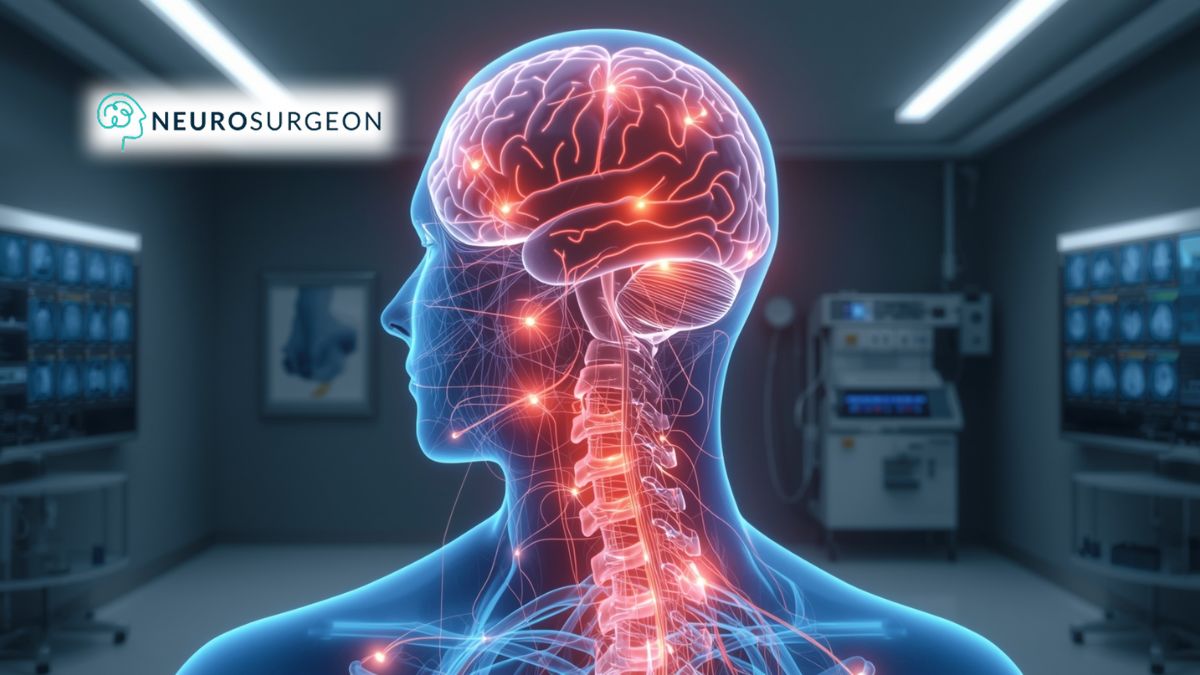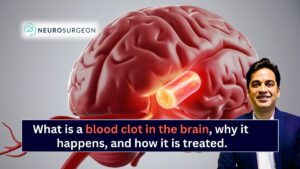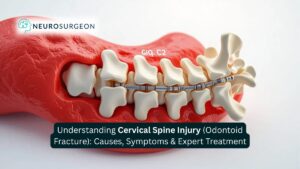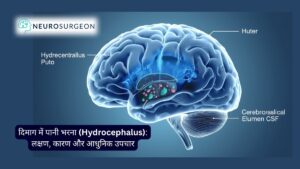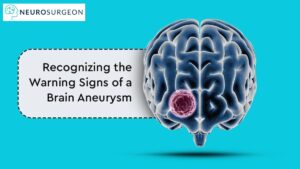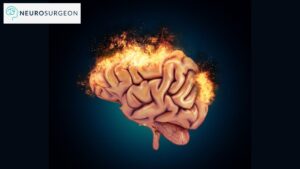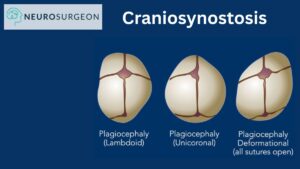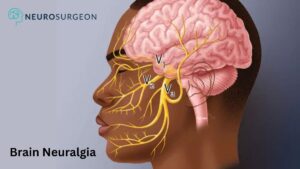Table of Contents
ToggleKnow Important information about blood clot in the brain from neurosurgeon Dr. Amit Deora
A blood clot in the brain is a serious medical condition that occurs when the flow of blood to certain brain tissues becomes blocked. This blockage prevents oxygen from reaching vital brain cells, which can lead to stroke, long-term neurological problems, or even life-threatening complications.
Many people experience sudden symptoms such as severe headache, weakness on one side of the body, vision problems, or difficulty speaking. Because the brain is such a sensitive organ, even a small clot can cause significant damage if not treated immediately.
Why does a blood clot in the brain happen?
A blood clot in the brain can develop due to several reasons. One of the most common causes is atherosclerosis—when fat and cholesterol build up in the blood vessels, making them narrow and encouraging clot formation. It can also occur due to uncontrolled high blood pressure, irregular heartbeat (such as atrial fibrillation), or underlying blood disorders that make the blood too thick. In many people, lifestyle factors such as smoking, lack of physical activity, high cholesterol, and obesity significantly increase the risk.
In some cases, a blood clot in the brain may also form after a traumatic head injury. When the brain experiences sudden impact, the blood vessels can rupture or respond abnormally, leading to internal bleeding or clot formation. This is why people who experience falls, vehicle accidents, or sports-related injuries are closely monitored for delayed neurological symptoms.
Can a CT scan detect a blood clot in the brain?
Yes, in most cases, a CT scan is the first diagnostic tool doctors use to identify a blood clot in the brain. A CT scan can quickly show bleeding, swelling, or blockages inside the brain. This makes it extremely useful in emergency situations, especially when a patient shows signs of stroke. If the CT scan is unclear, doctors may use an MRI or CT angiography for a more detailed view of the blood vessels. Because time is critical, imaging tests are done immediately to begin the right treatment without delay.
How neurosurgeons treat blood clots in the brain
Neurosurgeons use several advanced treatment methods depending on the size, location, and severity of the blood clot in the brain. In many cases, medications such as blood thinners or clot-dissolving drugs (thrombolytics) are used to break the clot and restore blood flow. These medicines work best when given within a few hours of symptom onset.
For larger or more dangerous clots, neurosurgeons may perform minimally invasive procedures such as endovascular thrombectomy, where a small device is guided through the blood vessels to physically remove the clot. In cases involving bleeding or increased brain pressure, surgery may be needed to drain blood, repair damaged vessels, or relieve pressure. The goal of treatment is always to save brain tissue, prevent complications, and restore normal neurological function.
Is a brain blood clot caused by an injury?
Yes, a blood clot in the brain can sometimes be triggered by an injury. Head trauma can cause blood vessels to tear or react abnormally, resulting in clots or bleeding beneath the skull. However, not every head injury leads to a clot; the risk depends on the force of impact, underlying health conditions, and whether blood vessels are already weak. People on blood-thinning medications are also more vulnerable to developing brain clots after even minor accidents.
Can a blood clot in the brain be dangerous?
A blood clot in the brain is always considered a medical emergency because it can cut off the oxygen supply to brain cells. Without oxygen, brain tissues begin to die within minutes, leading to irreversible damage. If left untreated, it can cause paralysis, speech problems, memory loss, seizures, or even death. The severity depends on how quickly treatment is provided and which part of the brain is affected. Early diagnosis and timely intervention save lives and greatly improve recovery.
What not to eat if you have a blood clot in the brain?
People recovering from a blood clot in the brain should avoid foods high in unhealthy fats, excessive salt, and processed sugars. These include fried foods, packaged snacks, red meats, and foods containing trans fats, as they can increase inflammation and worsen blood circulation. Too much salt can raise blood pressure, making it harder for the brain to heal.
Patients taking blood thinners should also limit foods extremely high in vitamin K, such as spinach and kale, because they can interfere with medication effectiveness. Instead, a balanced diet rich in whole grains, lean proteins, fruits, vegetables, and adequate hydration supports healing and prevents future clots.
Lifestyle after successful treatment of a blood clot in the brain
After successfully treating a blood clot in the brain, long-term care is essential. Doctors usually recommend regular exercise, weight management, and a heart-healthy diet to improve blood flow. Quitting smoking and limiting alcohol are also important to prevent recurrence. Many patients benefit from physiotherapy, speech therapy, or occupational therapy to regain strength and restore daily functioning.
Stress management, adequate sleep, and regular follow-ups with a neurologist or neurosurgeon are crucial in long-term recovery. Monitoring blood pressure, blood sugar, and cholesterol levels helps reduce the chance of another blood clot in the brain. With the right lifestyle changes, most people can return to normal routines and enjoy a healthier life.
